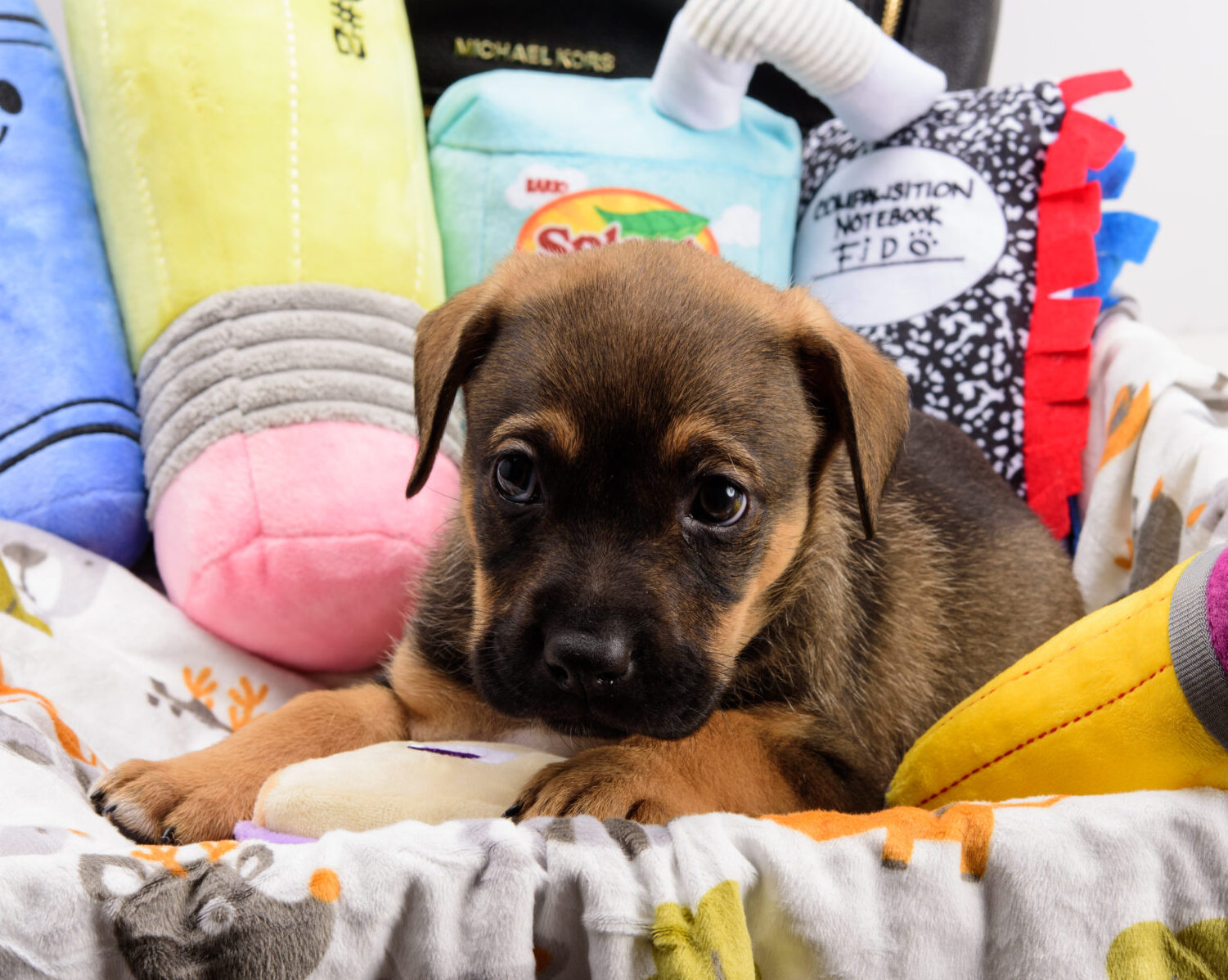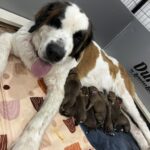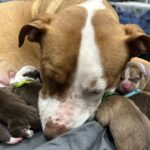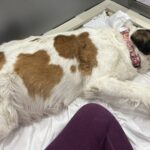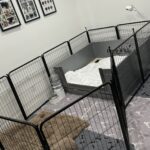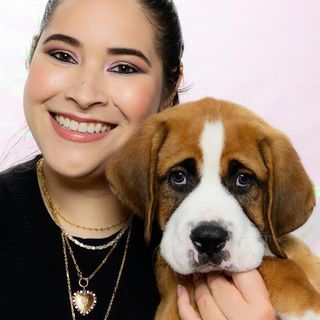Your pup should have their eyes and ears open and will be starting to walk. Pups are fearless at this age, which means it is a great time to introduce them to a variety of new stimuli, including louder sounds.
Week 3 involves a lot of introductions, while the remaining weeks in the Socialization Stage will be building on these introductions.
If your pups seem developmentally delayed, you will want to reduce the intensity of socialization and enrichment for another week, e.g. “week 3” will apply to them when they’re actually in week 4.
Week 3 Overview
- Introduce potty area
- Begin weaning
- Introduce grooming
- Introduce toys, textures, sounds, crate
- Continue body handling desensitization
- Redirect mouthiness
- Reward good behavior
- Sit with pups
- Expose to loud, unpredictable sounds
Care Tasks
| Task | Recommendation | Frequency |
|---|---|---|
| Add potty area | Use half of the pen as potty area, line with disposable pee pads. (See Introducing the Potty Area.) | One time |
| Replace soiled linens | Support potty training with more frequent linen changes | 2x Daily (or more; as often as needed) |
| Start weaning | Introduce wet food and water once teeth erupt (See Introducing Food and Water.) | 3x Daily (Food)As needed (Water) |
| Nail trims | Trim nails every 7 to 10 days (See Introducing Grooming.) | Weekly |
| Weigh | Record weights | Weekly |
Socialization Tasks
| Task | Recommendation | Frequency |
|---|---|---|
| Body handling | Gently touch ears, nose, paws, tail; lift lips (~5 minutes) Interact with pups by holding, petting, and cuddling | Daily |
| Introduce new people | Pups can now have visitors; foster must supervise | Weekly |
Environmental Enrichment
We recommend rotating toys and textures in the pups’ environment during linen changes in a way that feels intuitive.
| Task | Recommendation | Frequency |
|---|---|---|
| Introduce toys | Add toys to pups’ play pen, rotate or add new toys (while others are being washed) frequently | 2-3x Weekly |
| Introduce textures | Focus on soft, bumpy, and rubberized textures (nothing slippery or smooth) | 2-3x Weekly |
| Introduce sound | Passively introduce sound by ensuring pups can hear household activities, especially louder ones like vacuuming | Daily |
| Introduce crate | Place an open crate in pen with bedding in it | One time |
Age-Appropriate Toys and Textures
Toys need to be of the appropriate size to avoid pups swallowing or choking on them. For example, larger-breed pups may require larger toys to start with compared to smaller-breed pups.
Textures need to compliment the pups’ mobility level. During this age, more textured, non-slip surfaces are key. Smooth surfaces should be avoided as pups are still learning to walk.
Interactive Enrichment
We recommend rotating toys and textures in tandem with washing used objects and replacing with clean ones!
| Task | Recommendation | Frequency |
|---|---|---|
| Play with toys | Play with pups using the toys in their pen, encouraging them to approach and interact with the toy you’re holding | Daily |
| Redirect mouthiness | Allow only gentle mouthiness (“yelp” like a littermate would if too firm) and redirect mouthiness to toy | Daily |
| Reward good behavior | If a pup chooses to sit, reward with affectionate. | Daily |
| Sit with pups | Interact with pups, allowing them to explore you, climb on your lap, maneuver around you | Daily |
| Expose to loud, unpredictable sounds | Bang bowls together, drop a book, jangle keys, slam a door (no more than one per day on purpose) | 2-3x Weekly |

